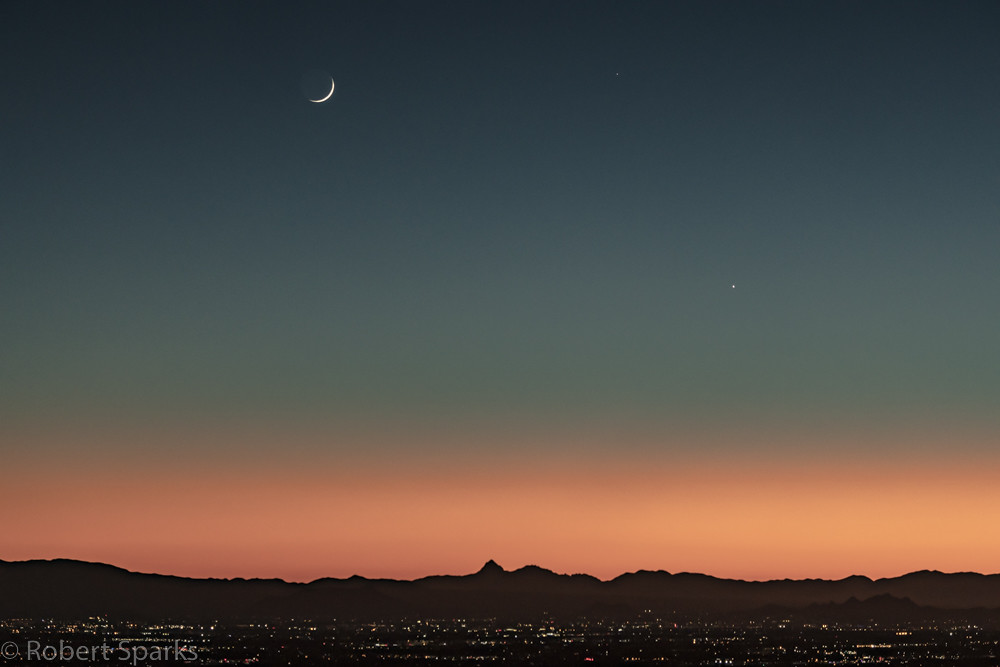Mercury puts on one of its best apparitions for 2024 this month.
Where have all of the planets gone? The late evening fall of dusk in early July also sees a sky seemingly vacant of familiar naked eye planets. Mars, Jupiter and Saturn are now denizens of dawn, and will stay that way for most of the remainder of 2024.
But two challenging planets are now emerging low to the west at dusk: Mercury and Venus. The two interior worlds are now mounting a slow return, as the hunt is now on the recover the two after sunset.
Mercury’s July apparition in particular is an interesting one, and one of the best of six for observers worldwide. This is mainly because the planet is headed towards aphelion 0.4667 Astronomical Units (AU) from the Sun on July 27th, just five days after greatest elongation. At greatest elongation on July 22nd , Mercury will display an 8” diameter 45% illuminated disk, shining at a respectable magnitude +0.3.
To be sure, Mercury doesn’t look like much more than a dot in a telescope, even at high power… but part of the thrill of finding the illusive world lies in knowing what your actually seeing.

Exploring Mercury
To be sure, Mercury has been known of since antiquity and isn’t at all that hard to see, if you know exactly where and when to look for it. A low flat horizon looking west at dusk certainly helps.
The often told tale that Nicolas Copernicus never saw Mercury is probably apocryphal. Looking at the diminutive world through the telescope reveals a cycle of Moon-like phases… and not much else. Mercury’s distinction as the innermost world in the solar system always assures that it always lingers low down in the murk of the atmosphere at dusk or dawn. This makes it too blurry to glimpse much in terms of surface detail. It wasn’t until the advent of space exploration that we knew much more about Mercury. NASA’s Mariner 10 made two brief flybys past the planet in 1974 and 1975, revealing an airless, cratered world 1.4 times the size of our Moon. Since then NASA’s Mercury MESSENGER revealed the planet in greater detail, becoming the first spacecraft to enter orbit around the world in 2011. Meanwhile, the joint ESA/JAXA BepiColombo mission has thus far made three flybys past Mercury, and will enter orbit in late 2025.
One of the most amazing views of Mercury in recent memory came from the Big Bear Solar Observatory during the May 9th, 2016 transit of Mercury:
…And Venus Makes Two
Meanwhile, Venus is also joining the evening scene. Though brighter at magnitude -3.9, (almost 100 times brighter than Mercury) Venus is also lower to the horizon in July. Venus typically makes a slower comeback into the evening. This is because it’s approaching us from the farside of the Sun. Think of Venus as a runner, trying to catch the Earth on the inside track of the solar system. Venus spends the remainder of 2024 in the evening sky. The planet reaches greatest eastern elongation 47 degrees from the Sun on January 10th, 2025.
The sky scene becomes ever more dynamic as the month continues. On July 6th, Mercury actually transits (passes in from of) the Beehive Cluster (Messier 44). Use binoculars to catch +4th magnitude dwarf planet 4 Vesta nearby. Venus also meets Messier 44 on July 18th, though the event is much lower to the horizon.

Mercury reaches greatest elongation 27 degrees east of the Sun at dusk on July 22nd.
The Moon joins the scene on the evenings of July 7th and July 8th as a waxing crescent. The crescent Moon always adds a three-dimensional look to the scene. This is because the nighttime side is dimly illuminated by the Earth in what’s termed Earthshine.

If you’ve never seen Mercury for yourself, this month is a good time to try and check the innermost world off of your life list.

